A Guide to Teacup Pomeranian Dogs
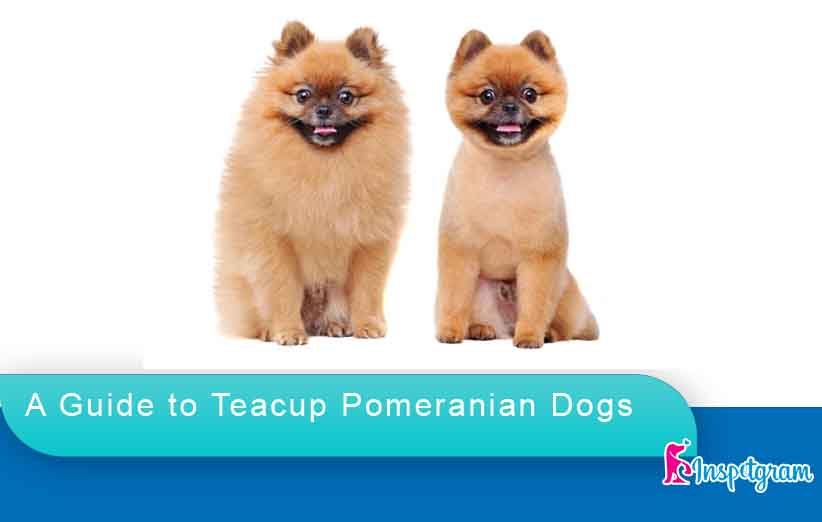
Teacup Pomeranian dogs are undoubtedly one of the most adorable and captivating breeds on the planet. Their tiny size, fluffy coats, and charming personalities make them irresistible companions. In this comprehensive guide, we will embark on a journey to explore the world of Teacup Pomeranian dogs, from their origins and characteristics to their care, training, and health. Whether you’re a prospective owner or an enthusiast, this book will provide you with all the information you need to understand and cherish these delightful little creatures.
1: Introduction to Teacup Pomeranian Dogs
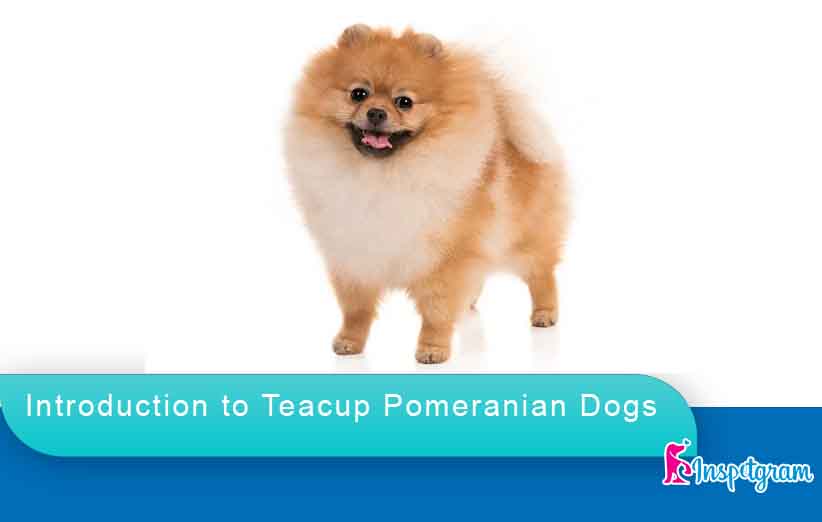
Teacup Pomeranians, often referred to simply as “Teacups,” are a miniature version of the well-loved Pomeranian breed. These pint-sized canines are adored for their diminutive stature, often weighing between 2 to 5 pounds, and their luscious coats. They have a captivating charm that can win the hearts of even the most hardened dog lover.
Originating from the Pomerania region in present-day Poland and Germany, Teacup Pomeranians were initially bred as working dogs, pulling sleds and herding sheep. Over time, they transformed into beloved companions for the European aristocracy, including Queen Victoria of England, who played a pivotal role in popularizing the breed.
Teacup Pomeranians boast an unmistakable appearance, characterized by their fox-like faces, small erect ears, and a plume-like tail that arches over their back. Their double coat, which is a soft, dense undercoat covered by a profuse outer layer, comes in various colors, making them incredibly picturesque.
In the following chapters, we will delve into every aspect of Teacup Pomeranian dogs, from their history to their present-day roles as beloved pets. We will explore their temperament, which combines a fiery spirit with a loving heart, and discuss the care and attention they require to thrive as tiny companions. Get ready for an in-depth exploration of the world of Teacup Pomeranian dogs as we embark on this delightful journey together.
2: History and Origin of the Teacup Pomeranian
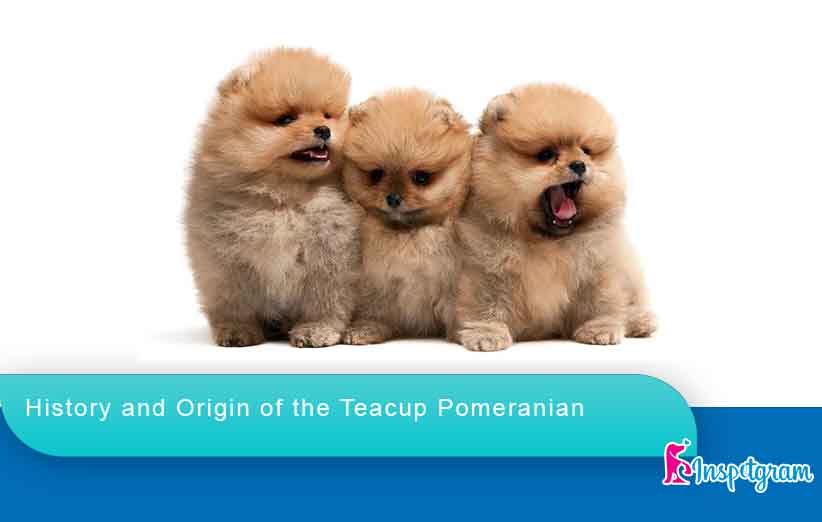
To truly understand the Teacup Pomeranian, we must dive into its rich history and explore its fascinating origin. The roots of the Teacup Pomeranian can be traced back to the Pomerania region, which stretches across modern-day Poland and Germany. In this historically significant area, these small but spirited dogs began their journey.
Initially, Pomeranians were bred as working dogs. They were known for their remarkable strength and were used for various tasks, such as pulling sleds and herding livestock. These early Pomeranians were larger than the Teacup variety we know today.
The turning point in the breed’s history came when Pomeranians caught the eye of European nobility, particularly in England. It was during the 18th century that these dogs underwent a transformation. They were selectively bred for smaller size, and their abundant, luxurious coats were emphasized. This miniaturization process led to the Teacup Pomeranians we now cherish.
One of the most notable figures in the history of the Teacup Pomeranian is Queen Victoria of England. She played a pivotal role in popularizing the breed during her visits to Italy, where she discovered these enchanting little dogs. Queen Victoria was particularly fond of the smaller-sized Pomeranians and imported a few to England. This royal endorsement cemented the breed’s popularity, and they soon became a favorite among the British elite.
Today, Teacup Pomeranians continue to enchant dog lovers worldwide with their regal history and diminutive size. Their lineage is a testament to the breed’s adaptability and charm, making them a cherished companion for those seeking a small dog with a big personality.
As we proceed in this book, we will uncover more aspects of Teacup Pomeranian history, examining their transition from working dogs to beloved pets. Understanding their roots is essential in appreciating the unique blend of attributes that make them such extraordinary companions.
3: Characteristics and Temperament
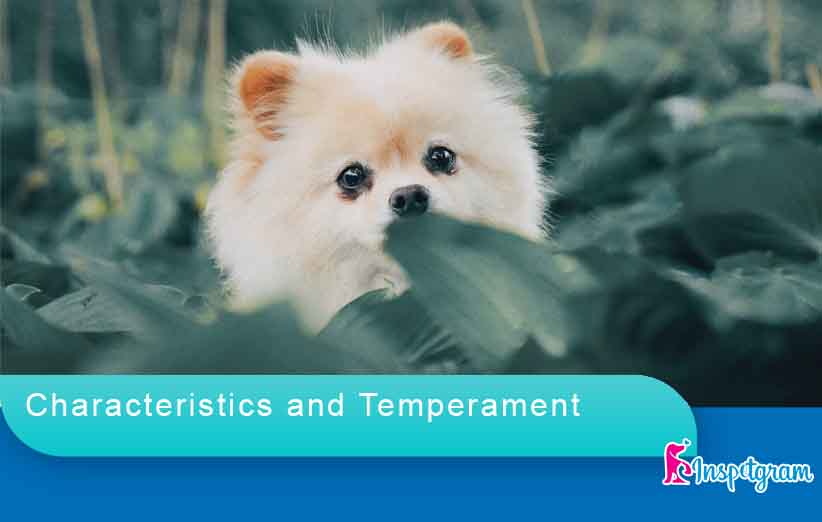
Teacup Pomeranians are not just about their size; they possess a distinctive set of characteristics and a temperament that sets them apart from other dog breeds. Understanding these traits is essential for anyone considering them as a pet. In this chapter, we will delve into what makes Teacup Pomeranians so unique.
Size: The most obvious characteristic of Teacup Pomeranians is their tiny size. They are one of the smallest dog breeds in the world, weighing typically between 2 to 5 pounds and standing about 7 to 12 inches tall at the shoulder. Their diminutive stature is one of the reasons they are so beloved.
Appearance: Teacup Pomeranians are known for their striking appearance. They have a fox-like face with a pointed snout and small, expressive eyes. Their small, upright ears give them an alert and inquisitive look. What truly stands out is their double coat, which consists of a soft, dense undercoat and a profuse outer layer that comes in various colors, from orange to black and everything in between. This luxurious coat is often groomed into a fluffy mane, adding to their charm.
Temperament: Teacup Pomeranians are full of personality. They are known for their confidence, intelligence, and a zest for life. Despite their tiny size, they have a bold and sometimes even feisty disposition. These little dogs are not shy about making their presence known and can be quite vocal when they want attention. They are also fiercely loyal and form strong bonds with their owners.
Energy Level: Teacup Pomeranians have a surprising amount of energy packed into their small frames. They are always up for play and adventure and require daily exercise to stay happy and healthy. This can be in the form of short walks, playtime, or even agility training.
Affection: These little companions are affectionate to their owners and thrive on human interaction. They make excellent lap dogs and love to snuggle up with their people. They are known for their sweet and loving nature, which makes them perfect as both companions and therapy dogs.
In the chapters ahead, we will explore how to care for and train these charming dogs, taking into account their unique characteristics and temperament. Understanding the Teacup Pomeranian’s personality is essential for creating a loving and harmonious relationship with them.
4: Caring for Your Teacup Pomeranian
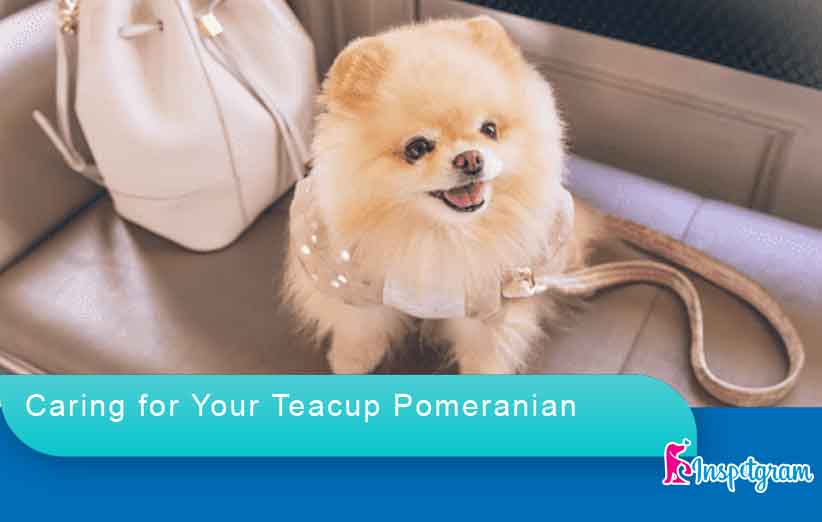
Caring for a Teacup Pomeranian is a joyful and rewarding experience, but it comes with its own set of considerations. These pint-sized canines require special care to ensure they lead happy, healthy lives. In this chapter, we will discuss the key aspects of caring for your Teacup Pomeranian.
1. Diet and Nutrition: Teacup Pomeranians have unique dietary needs due to their small size and high metabolism. It’s crucial to provide them with high-quality dog food, preferably formulated for small breeds. Be mindful of portion control to prevent overeating, which can lead to obesity. Consult with your veterinarian to determine the right feeding schedule and portion sizes.
2. Exercise and Play: Despite their diminutive size, Teacup Pomeranians are active dogs that enjoy playtime and short walks. Regular exercise is essential to keep them physically and mentally stimulated. They love interactive toys and play sessions with their owners, which are great for bonding.
3. Grooming: The Teacup Pomeranian’s double coat is one of its most distinctive features, but it also requires regular grooming. Brushing their coat several times a week helps prevent matting and keeps their fur in good condition. Occasional baths are necessary, but be cautious not to overdo it, as it can strip natural oils from their skin.
4. Health Care: Teacup Pomeranians are generally healthy dogs, but their small size can make them susceptible to certain health issues, such as dental problems, patellar luxation, and collapsed trachea. Regular vet check-ups, dental care, and keeping an eye on their weight are essential for their well-being.
5. Socialization: Socializing your Teacup Pomeranian from an early age is vital to ensure they are well-adjusted and comfortable around other dogs and people. Expose them to various environments and experiences to build their confidence and reduce anxiety.
6. Training: Teacup Pomeranians are intelligent and eager to please, making them relatively easy to train. Positive reinforcement techniques work best, as they respond well to praise and treats. Basic obedience training is crucial for their safety and your peace of mind.
7. Safety Precautions: Due to their small size, Teacup Pomeranians are more vulnerable to accidents and injuries. Take extra precautions, such as keeping them away from larger dogs, childproofing your home, and using a leash when walking to prevent them from darting into traffic.
Caring for a Teacup Pomeranian can be a deeply rewarding experience, as these tiny dogs offer unwavering loyalty and affection in return for your love and care. Remember that your Teacup Pomeranian relies on you for their well-being, so providing the best care possible is a testament to your commitment as a responsible pet owner.
In the following chapters, we will dive deeper into specific aspects of Teacup Pomeranian care, including grooming, training, and health considerations, ensuring that you are well-prepared to provide the best life for your beloved companion.
5: Teacup Pomeranian Health and Well-being
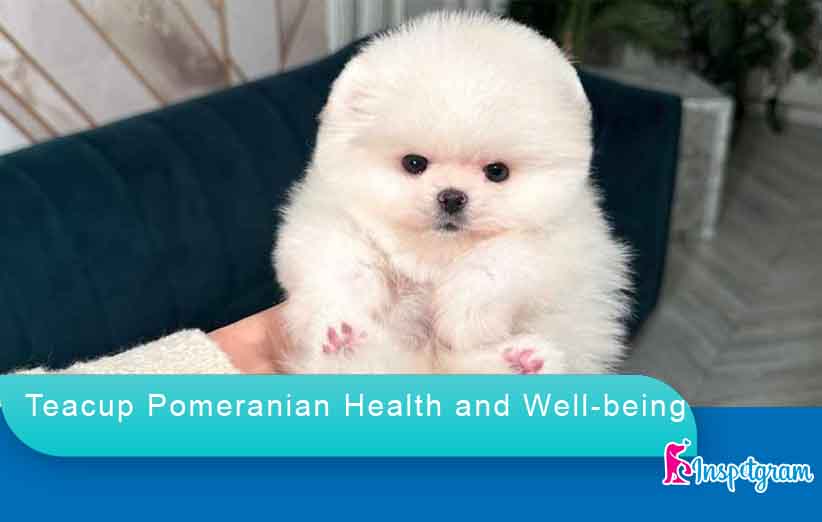
Ensuring the health and well-being of your Teacup Pomeranian is of paramount importance. These petite dogs are generally robust, but their size makes them more susceptible to certain health issues. In this chapter, we will explore the aspects of maintaining your Teacup Pomeranian’s health and overall well-being.
Regular Veterinary Check-ups: Just like any other dog, Teacup Pomeranians need routine veterinary care. Regular check-ups are essential to catch and address health issues early. Your veterinarian will perform physical exams, administer vaccinations, and discuss preventative care measures.
Vaccinations: Keeping your Teacup Pomeranian up to date on vaccinations is crucial to protect them from various diseases. Your veterinarian will provide a vaccination schedule tailored to your dog’s needs.
Dental Care: Dental health is especially important for Teacup Pomeranians. Their small mouths can be prone to dental issues like tartar buildup and gum disease. Regular teeth cleaning and dental treats can help maintain their oral health.
Parasite Control: Fleas, ticks, and intestinal parasites can affect dogs of all sizes, including Teacup Pomeranians. Use preventative medications and keep your dog’s environment clean to reduce the risk of infestations.
Diet and Nutrition: A well-balanced diet is essential for your Teacup Pomeranian’s health. Ensure they receive high-quality dog food appropriate for their size and age. Consult with your veterinarian to determine the best diet plan.
Weight Management: Teacup Pomeranians are prone to obesity, which can lead to various health problems. Monitor their weight and adjust their diet and exercise routine accordingly.
Exercise: Regular exercise is vital for maintaining your Teacup Pomeranian’s health and well-being. Engage in daily playtime and short walks to keep them physically and mentally active.
Mental Stimulation: These intelligent dogs also require mental stimulation. Puzzle toys and interactive games can keep their minds sharp and prevent boredom.
Stress Management: Teacup Pomeranians are sensitive to stress. Creating a calm and comfortable environment, providing plenty of love and attention, and ensuring they feel safe can help reduce stress levels.
Emergency Preparedness: Be prepared for emergencies by having a pet first aid kit and knowing the location of the nearest emergency animal hospital. Quick action can be life-saving in critical situations.
By prioritizing the health and well-being of your Teacup Pomeranian, you are not only ensuring their longevity but also providing them with the best quality of life. Regular veterinary care, a balanced diet, and a loving environment will contribute to a happy and healthy Teacup Pomeranian companion.
In the upcoming chapters, we will delve into specific health topics that are particularly relevant to Teacup Pomeranians, giving you the knowledge and tools to care for your tiny furry friend effectively.
6: Training and Socialization
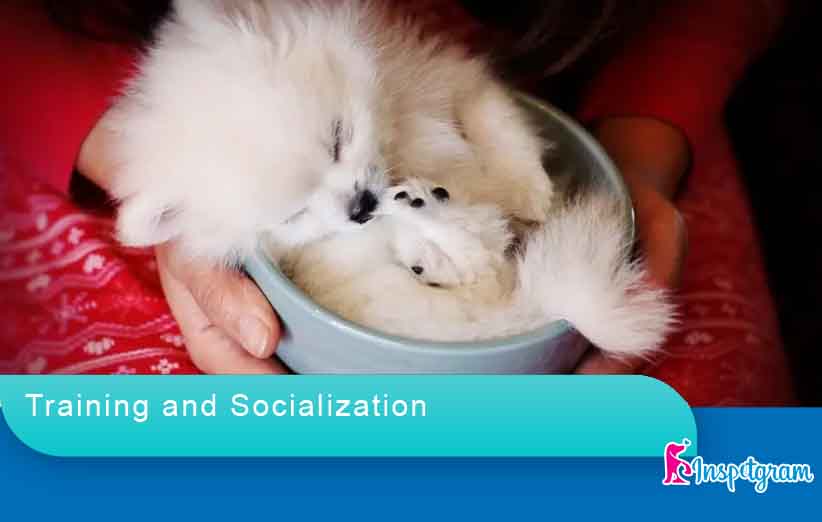
Training and socialization are pivotal aspects of raising a well-rounded and obedient Teacup Pomeranian. While they may be small in stature, they have large personalities and intelligence to match. In this chapter, we will explore the techniques and considerations for training and socializing your Teacup Pomeranian effectively.
Obedience Training: Start training your Teacup Pomeranian from a young age. These dogs are intelligent and eager to please, which makes them relatively easy to train. Use positive reinforcement methods, such as praise and treats, to reward good behavior. Consistency is key to reinforce commands and behaviors.
Basic Commands: Teaching basic commands like sit, stay, and come is essential for safety and maintaining a well-behaved pet. Patience and repetition will help your Teacup Pomeranian grasp these commands.
Socialization: Early socialization is crucial for Teacup Pomeranians to ensure they are comfortable around other dogs and people. Expose them to various situations, environments, and people from puppyhood to prevent fear or aggression issues in the future.
House Training: House training a Teacup Pomeranian can be a challenge due to their small bladders. Consistent schedules and positive reinforcement for eliminating outdoors will help them learn proper potty etiquette.
Crate Training: Crate training can provide a secure and comfortable space for your Teacup Pomeranian. It can also assist in housebreaking and prevent destructive behavior when you’re not around.
Leash Training: Leash training is essential to keep your Teacup Pomeranian safe during walks. Start with short, positive sessions to get them used to the leash and gradually extend the walks as they become more comfortable.
Behavioral Issues: Address behavioral issues like excessive barking, separation anxiety, or aggression with patience and positive reinforcement. Consult a professional dog trainer or behaviorist if needed.
Social Interaction: Encourage positive interactions with other dogs and people. Teacup Pomeranians are social by nature, and regular socialization can prevent shyness or aggressiveness.
Exercise and Mental Stimulation: Incorporate playtime, puzzles, and interactive toys into your Teacup Pomeranian’s daily routine. Mental stimulation is as important as physical exercise for these intelligent dogs.
Training and socializing your Teacup Pomeranian is not just about creating a well-behaved pet; it’s about building a strong and loving bond between you and your furry friend. The effort you invest in training will pay off with a well-adjusted, confident, and happy companion.
In the upcoming chapters, we will delve deeper into specific aspects of training and provide tips for addressing common behavioral issues that Teacup Pomeranian owners may encounter.
7: Feeding and Nutrition

Feeding your Teacup Pomeranian the right way is essential for their overall health and well-being. Due to their small size and high energy levels, they have unique nutritional requirements. In this chapter, we will explore the specifics of feeding and nutrition for Teacup Pomeranians.
High-Quality Dog Food: Begin by selecting a high-quality dog food formulated for small breeds. Look for options that list a quality protein source as the first ingredient and avoid foods that contain excessive fillers, artificial additives, or preservatives.
Portion Control: Due to their tiny size, Teacup Pomeranians are prone to obesity. Be cautious about portion sizes to prevent overfeeding. Follow the recommended feeding guidelines on the dog food packaging and consult with your veterinarian to determine the right amount for your individual dog’s needs.
Feeding Schedule: Establish a regular feeding schedule with set meal times. This routine helps with housebreaking and makes it easier to monitor your dog’s appetite.
Treats: Limit the number of treats you give your Teacup Pomeranian. While treats can be an excellent training tool, overindulgence can lead to weight gain. Opt for small, healthy treats that won’t disrupt their balanced diet.
Fresh Water: Ensure your Teacup Pomeranian has access to clean, fresh water at all times. Proper hydration is crucial for their well-being.
Special Dietary Considerations: Some Teacup Pomeranians may have dietary sensitivities or allergies. If your dog experiences digestive issues or allergic reactions to certain foods, consult with your veterinarian to determine an appropriate diet.
Wet vs. Dry Food: Both wet and dry dog food can be suitable for Teacup Pomeranians. Wet food can be a great option for those who struggle to maintain adequate hydration. However, it’s important to brush their teeth regularly, as wet food can lead to dental problems.
Age-Appropriate Food: As your Teacup Pomeranian ages, their nutritional needs may change. Consult with your veterinarian to transition to senior dog food when appropriate.
Consult with Your Veterinarian: Your veterinarian is your best resource for determining the ideal diet for your Teacup Pomeranian. They can consider factors like age, activity level, and any specific health concerns to recommend the most suitable food.
Providing proper nutrition is a cornerstone of responsible pet ownership. By offering your Teacup Pomeranian a balanced diet, you are ensuring their health and longevity. Remember that each dog is unique, and it’s crucial to tailor their diet to their specific needs.
In the following chapters, we will discuss grooming and hygiene for Teacup Pomeranians, as well as their unique health concerns and how to address them effectively.
8: Grooming Your Teacup Pomeranian
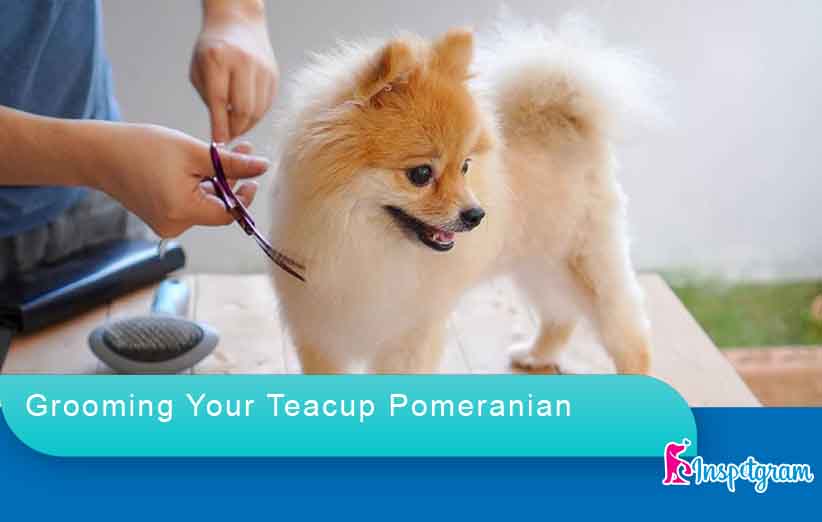
The Teacup Pomeranian’s luxurious double coat is one of its most distinctive features, but it requires regular grooming to keep it healthy and looking its best. In this chapter, we will explore the essential aspects of grooming your Teacup Pomeranian.
Brushing: Teacup Pomeranians have a thick, plush coat that can easily become tangled and matted. Regular brushing is essential to prevent this. Use a soft-bristle brush or a pin brush to gently comb through their fur, starting from the tips and working your way to the skin. Brushing not only keeps their coat in good condition but also serves as a bonding activity between you and your pet.
Bathing: While Teacup Pomeranians don’t require frequent baths, you should bathe them when they become dirty or smelly. Use a dog-specific shampoo and ensure that you rinse thoroughly to prevent skin irritations. Be cautious not to over-bathe, as it can strip their coat of essential oils.
Trimming: Regular trimming of the fur around the eyes, ears, and paws is necessary to keep your Teacup Pomeranian comfortable and clean. Trim the hair between their paw pads to prevent matting and discomfort.
Teeth Care: Dental hygiene is essential for Teacup Pomeranians. Brush their teeth regularly with a dog-specific toothbrush and toothpaste to prevent dental issues. Dental chews and toys can also help maintain oral health.
Nail Care: Check and trim your Teacup Pomeranian’s nails as needed. Long nails can cause discomfort and affect their gait. Be cautious when trimming not to cut too close to the quick, which can cause bleeding and pain.
Ear Cleaning: Clean their ears periodically with a dog-specific ear cleaner to prevent ear infections. Check for signs of redness, discharge, or foul odors, which may indicate an ear problem.
Anal Gland Expression: Some Teacup Pomeranians may require periodic anal gland expression. This is a procedure best performed by a veterinarian or professional groomer.
Professional Grooming: Consider regular visits to a professional groomer, especially if you’re not confident in your grooming skills. A professional can provide specialized care, including breed-standard trims.
Grooming your Teacup Pomeranian not only keeps them looking beautiful but also contributes to their overall well-being. It’s an excellent opportunity to check for any skin issues, lumps, or other irregularities. Plus, the bonding experience during grooming can strengthen your relationship with your beloved pet.
In the upcoming chapters, we will delve into the unique life stages of Teacup Pomeranians and their specific care needs during puppyhood, adulthood, and their golden years.
9: Teacup Pomeranians in Different Life Stages

Just like humans, Teacup Pomeranians go through various life stages, each with its unique care requirements. Understanding and adapting to these stages is essential for providing your tiny companion with the best care possible. In this chapter, we will explore the different life stages of Teacup Pomeranians and how to care for them during each phase.
1. Puppy Stage: Teacup Pomeranian puppies are incredibly cute and full of energy. During this stage, it’s crucial to focus on socialization, basic training, and housebreaking. Provide a safe environment for exploration, offer plenty of playtime, and start with regular vet check-ups to ensure they are growing healthily.
2. Adult Stage: The adult stage usually begins at around 1 year of age. Your Teacup Pomeranian will have reached their full size and will have a well-established personality. Continue with obedience training and regular exercise. Be attentive to their nutritional needs, as their metabolism may change.
3. Senior Stage: Teacup Pomeranians typically enter their senior years around 8 to 10 years of age. This stage may involve reduced activity levels and potential health issues. Regular vet check-ups become even more critical to address any age-related concerns. Adjust their diet to accommodate potential weight changes and consider adding supplements for joint health.
4. All Life Stages: Throughout all life stages, your Teacup Pomeranian will need consistent grooming and dental care. Keep a close eye on their weight and nutrition to ensure they remain in good health. Continue socializing and providing mental and physical stimulation to keep them happy and well-adjusted.
As your Teacup Pomeranian moves through these different life stages, your role as a responsible pet owner evolves. Adapting to their changing needs and ensuring they receive the appropriate care at each stage is crucial for providing them with a happy and healthy life.
In the following chapters, we will discuss the unique roles Teacup Pomeranians can play as therapy dogs and in breeding programs. We will also address common health issues and myths associated with this delightful breed.
10: Teacup Pomeranians as Therapy Dogs

Teacup Pomeranians, with their small size and friendly demeanor, can make exceptional therapy dogs. In this chapter, we will explore the roles they can play in therapy and the benefits they bring to individuals in need.
Therapy Dog Characteristics: Teacup Pomeranians possess a set of characteristics that make them well-suited for therapy work:
- Small Size: Their compact size allows them to be easily transported to various locations, making them ideal for visits to hospitals, nursing homes, and schools.
- Friendly and Affectionate: Teacup Pomeranians are known for their loving and affectionate nature, which can provide comfort and emotional support to those they visit.
- Eager to Please: Their desire to please their owners and interact with people makes them responsive to training, a crucial aspect of therapy dog work.
Therapy Dog Roles: Teacup Pomeranians can fulfill various roles as therapy dogs, including:
- Comforting Patients: They can provide emotional support to patients in hospitals or nursing homes, bringing smiles and joy to those in difficult situations.
- Assisting with Anxiety: Teacup Pomeranians can help individuals dealing with anxiety or stress, providing a calming presence.
- Supporting Education: In schools, they can aid in educational settings, helping students develop empathy and offering a sense of security.
- Visiting the Elderly: Teacup Pomeranians can bring happiness to the lives of seniors in assisted living facilities, reducing feelings of loneliness.
Requirements for Therapy Dogs: To become a therapy dog, Teacup Pomeranians must meet certain criteria:
- Good behavior and obedience, including following basic commands.
- Up-to-date vaccinations and a clean bill of health from a veterinarian.
- Proper grooming and hygiene.
- Socialization and comfort around various people and environments.
- Registration with a recognized therapy dog organization.
Therapy work with Teacup Pomeranians can be deeply rewarding for both the dog and their owner. It provides an opportunity to make a positive impact on the lives of individuals who benefit from the comfort and companionship these tiny therapy dogs can offer.
In the upcoming chapters, we will explore breeding Teacup Pomeranians, common health issues they may face, and dispel some myths surrounding this charming breed.
11: Breeding Teacup Pomeranians
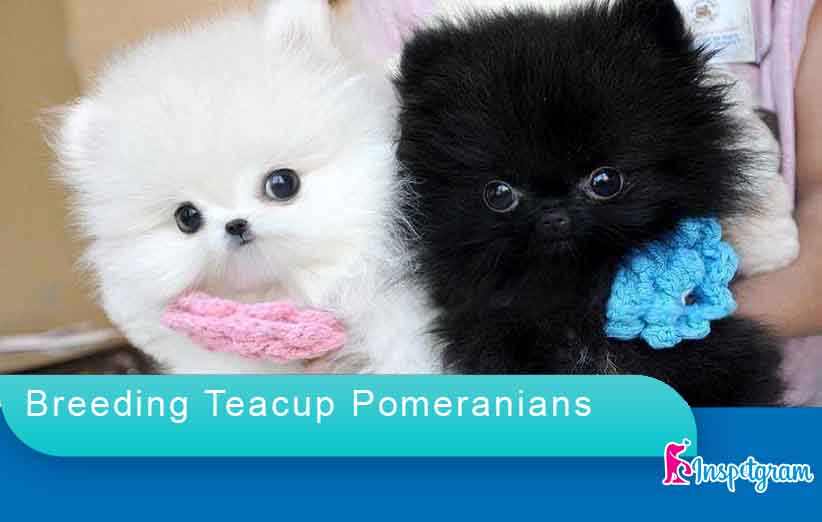
Breeding Teacup Pomeranians is a specialized and complex endeavor that requires in-depth knowledge of the breed and a strong commitment to the welfare of the dogs. In this chapter, we will delve into the world of breeding Teacup Pomeranians, its challenges, and ethical considerations.
Understanding Teacup Pomeranian Breeding: Breeding Teacup Pomeranians involves selecting parent dogs that meet the breed standard’s size and characteristics. Breeding for smaller size can result in Teacup Pomeranians, but it’s important to note that achieving and maintaining this size comes with various health risks and ethical concerns.
Health Considerations: Breeding for smaller size can lead to a range of health issues in Teacup Pomeranians, including:
- Fragile bones that are prone to fractures.
- Dental problems due to overcrowded teeth.
- Respiratory issues due to a smaller trachea.
- Hypoglycemia (low blood sugar) due to their tiny size.
Ethical breeders prioritize the health and well-being of the dogs over size, and they aim to produce healthy, happy, and well-socialized Pomeranians.
Ethical Breeding Practices: Ethical breeders adhere to the following principles when breeding Teacup Pomeranians:
- Health Screening: Both parent dogs should undergo thorough health screenings to minimize the risk of passing on genetic health issues.
- Size Focus: While ethical breeders may produce smaller Pomeranians, they prioritize the health and well-being of the dogs over extreme size reduction.
- Proper Nutrition: Pregnant and nursing dogs, as well as puppies, should receive a balanced diet and proper care to support their growth and development.
- Socialization: Puppies should be exposed to various experiences and people to ensure they grow up to be well-adjusted dogs.
- Vet Care: Regular veterinary check-ups and vaccinations are essential for the health of both parent dogs and puppies.
Responsible Ownership: Teacup Pomeranian breeders also have a responsibility to ensure that puppies go to responsible and loving homes. They should provide information, guidance, and support to new owners.
Breeding Teacup Pomeranians is a serious undertaking, and ethical breeders prioritize the health and welfare of the dogs. It’s essential to research and work with reputable breeders if you’re considering bringing a Teacup Pomeranian into your home.
In the upcoming chapters, we will discuss common health issues that Teacup Pomeranians may face and debunk some myths and misconceptions associated with this breed.
12: Common Health Issues and Solutions

Teacup Pomeranians, like any other breed, can be prone to certain health issues, some of which may be exacerbated by their small size. In this chapter, we will explore common health problems that Teacup Pomeranians may face and offer solutions for addressing these issues.
1. Dental Problems: Teacup Pomeranians can be prone to dental issues due to overcrowded teeth. Regular dental care, including brushing, dental chews, and professional cleanings, can help prevent dental problems.
2. Respiratory Issues: Their small tracheas can make Teacup Pomeranians susceptible to respiratory issues. Avoid exposing them to extreme heat or excessive exercise. Keep them at a healthy weight to reduce the strain on their respiratory system.
3. Hypoglycemia: Teacup Pomeranians are at risk of hypoglycemia, which can lead to weakness, seizures, or even coma. Ensure they have access to regular meals and snacks to maintain stable blood sugar levels.
4. Luxating Patella: Patellar luxation, where the kneecap dislocates, is a common issue in Teacup Pomeranians. Regular exercise and maintaining a healthy weight can help reduce the risk.
5. Allergies: Teacup Pomeranians can develop allergies to various factors, including food, pollen, or environmental irritants. Identifying and managing allergies with the guidance of a veterinarian is essential.
6. Heart Problems: Some Teacup Pomeranians may develop heart conditions, such as mitral valve disease. Regular veterinary check-ups can help monitor and manage heart health.
7. Obesity: Because they are prone to obesity, it’s crucial to monitor their weight and provide a balanced diet and regular exercise. Avoid overfeeding and excessive treats.
8. Eye Issues: Teacup Pomeranians may be predisposed to eye problems, including cataracts. Regular eye examinations by a veterinarian are necessary for early detection and treatment.
9. Skin Conditions: Pomeranians can develop skin issues, such as allergies or dermatitis. Keeping their skin clean and addressing any concerns promptly can help maintain healthy skin.
10. Parasites: Regular parasite prevention is essential to protect your Teacup Pomeranian from fleas, ticks, and intestinal parasites.
Caring for your Teacup Pomeranian’s health involves vigilance and regular veterinary check-ups. Being aware of their potential health issues and taking preventative measures can help ensure a long and healthy life for your beloved pet.
In the upcoming chapters, we will address common myths and misconceptions about Teacup Pomeranians and conclude with a heartwarming collection of stories and experiences from Teacup Pomeranian owners.
13: Debunking Teacup Pomeranian Myths
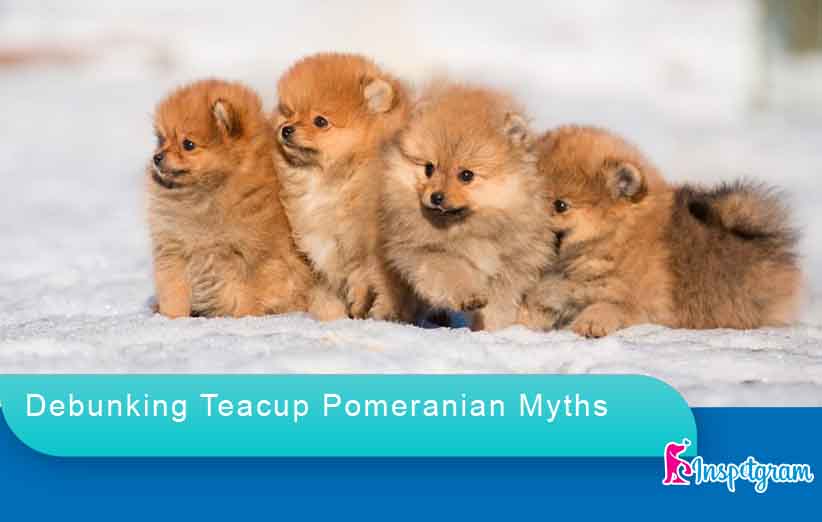
The term “Teacup Pomeranian” often gives rise to various myths and misconceptions. In this chapter, we will address some of the most common myths and provide clarification on what’s accurate regarding these pint-sized pups.
Myth 1: Teacup Pomeranians Are a Separate Breed Teacup Pomeranians are not a distinct breed. They are simply Pomeranians selectively bred for smaller size. They maintain the same breed characteristics and standards, just in a tinier package.
Myth 2: Teacup Pomeranians Are Fragile and Delicate While Teacup Pomeranians are smaller than standard Pomeranians, they are not necessarily more fragile. With proper care, they can be as robust and active as their larger counterparts. Responsible breeding and care play a significant role in their health and resilience.
Myth 3: Teacup Pomeranians Live a Very Short Life The lifespan of a Teacup Pomeranian is influenced by factors like genetics, care, and overall health. On average, they can live between 12 to 16 years or even longer with proper care. It’s essential to focus on their well-being to maximize their life expectancy.
Myth 4: Teacup Pomeranians Are Not Suitable for Families Teacup Pomeranians can be wonderful family pets. Their small size can make them great companions for families living in apartments or with limited space. However, they do require socialization, training, and supervision around very young children to ensure a positive relationship.
Myth 5: Teacup Pomeranians Don’t Require Exercise Teacup Pomeranians may be small, but they are active and require regular exercise. Daily playtime and short walks are essential to keep them healthy and happy. Neglecting their exercise needs can lead to obesity and behavioral issues.
Myth 6: All Teacup Pomeranians Are the Same Size Teacup Pomeranians can vary in size, just like any other dog. The term “Teacup” is not a precise size classification but rather an indication of their smaller stature. It’s essential to consider each dog as an individual, as size can differ among them.
Debunking these myths helps potential Teacup Pomeranian owners make informed decisions about bringing one of these adorable dogs into their homes. Responsible breeding and proper care are key to ensuring the health and well-being of these beloved pets.
In the final chapter, we will share heartwarming stories and experiences from Teacup Pomeranian owners, highlighting the joys and bonds they share with their tiny companions.
14: Tales of Teacup Pomeranian Companions
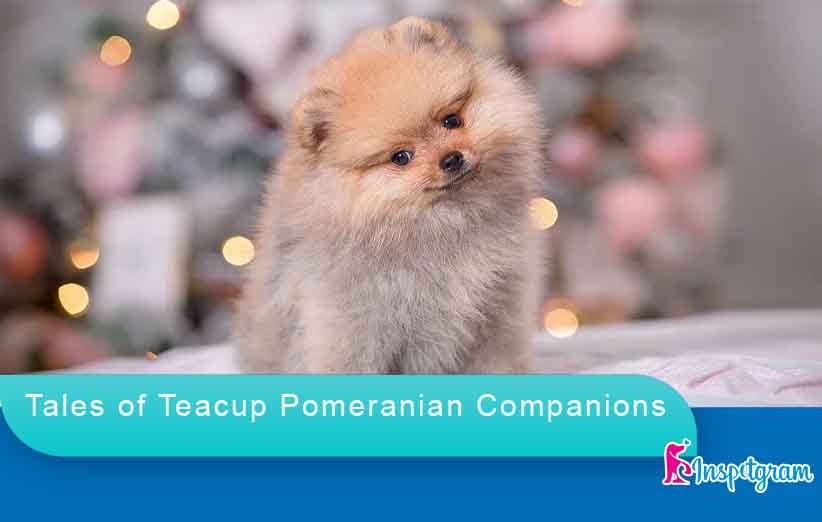
Teacup Pomeranians have a special place in the hearts of their owners. In this chapter, we will share a collection of heartwarming stories and experiences from Teacup Pomeranian owners, showcasing the joy and love that these tiny companions bring into their lives.
Story 1: Bella’s Resilience Bella, a Teacup Pomeranian, was adopted from a rescue organization. She had a challenging past, but her owner’s love and care helped her overcome her fears and blossom into a confident and affectionate little dog. Bella’s story is a testament to the resilience and capacity for love that Teacup Pomeranians possess.
Story 2: Buddy’s Loyal Friendship Buddy, a Teacup Pomeranian, became an unwavering source of comfort and companionship for his owner during a difficult time. His boundless love and loyalty were a reminder of the remarkable bonds that can form between Teacup Pomeranians and their owners.
Story 3: Daisy’s Adventures Daisy, a Teacup Pomeranian, embarked on countless adventures with her owner. From hiking in the mountains to relaxing on sunny beaches, Daisy’s zest for life and sense of wonder inspired her owner to embrace the joy of exploration and discovery.
Story 4: Max’s Therapeutic Touch Max, a Teacup Pomeranian, trained as a therapy dog, brought happiness and comfort to patients in a local hospital. His presence provided a ray of light in the lives of those facing health challenges, showing the remarkable impact that Teacup Pomeranians can have in the world.
Story 5: Luna’s Playful Spirit Luna, a Teacup Pomeranian, displayed a playful and mischievous spirit that continually brightened her owner’s day. Luna’s ability to find joy in the simplest of moments reminded her owner of the beauty in embracing the present.
These stories illustrate the remarkable connections and experiences that Teacup Pomeranian owners share with their beloved companions. They showcase the capacity of these small dogs to bring immense happiness, love, and inspiration into the lives of those fortunate enough to call them family.
In conclusion, this book has provided a comprehensive look into the world of Teacup Pomeranians, from their care and training to their roles as therapy dogs and the myths surrounding them. It is our hope that this book has been informative and enjoyable, offering valuable insights into the wonderful world of Teacup Pomeranians.
15: The Teacup Pomeranian Community
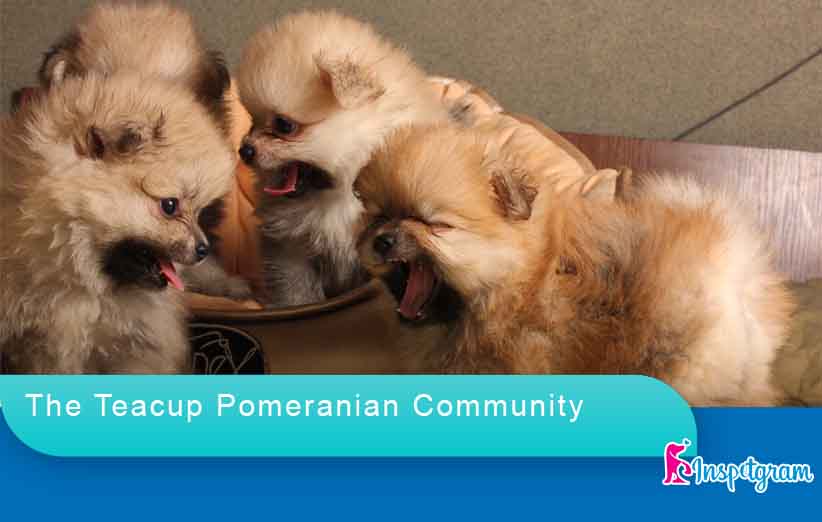
The world of Teacup Pomeranians is not just about individual dogs and their owners; it’s a vibrant and supportive community of passionate enthusiasts. In this final chapter, we will explore the sense of camaraderie and shared experiences that bind Teacup Pomeranian lovers together.
Breed Enthusiasts: Teacup Pomeranian enthusiasts are bound by their deep affection for these small but spirited dogs. They come together to celebrate the breed’s unique characteristics, share stories, and offer advice to one another.
Online Communities: The internet has provided a platform for Teacup Pomeranian lovers to connect globally. There are dedicated forums, social media groups, and websites where owners and breed enthusiasts share their experiences, ask for advice, and display their adorable companions.
Supportive Networks: Within the Teacup Pomeranian community, you’ll find a network of support. Whether you’re dealing with a specific health concern or simply looking for advice on training and care, there are fellow owners and breeders willing to offer guidance.
Rescue and Adoption: The community also has a strong presence in Teacup Pomeranian rescue and adoption efforts. Many dedicated individuals work tirelessly to rescue, rehabilitate, and find loving homes for Teacup Pomeranians in need.
Events and Meetups: Teacup Pomeranian enthusiasts often organize events and meetups where owners and their tiny companions can come together for playdates, walks, and celebrations. These gatherings foster a sense of belonging and shared appreciation for the breed.
The Joy of Sharing: In the Teacup Pomeranian community, sharing stories, photos, and anecdotes about these charming dogs is a common pastime. The joy that Teacup Pomeranians bring to their owners is contagious, and many find happiness in spreading the love.
The Teacup Pomeranian community is a testament to the remarkable connections that can form over a shared love for a particular breed. It is a place where the joys and challenges of owning these diminutive dogs are celebrated, and where the support and camaraderie among enthusiasts shine brightly.
As we conclude this book, we celebrate the incredible world of Teacup Pomeranians and the many ways they bring love, laughter, and companionship to their owners’ lives. Whether you’re a seasoned Teacup Pomeranian enthusiast or just beginning your journey with one of these little furballs, you are part of a warm and welcoming community that cherishes the charm and character of these tiny dogs.











